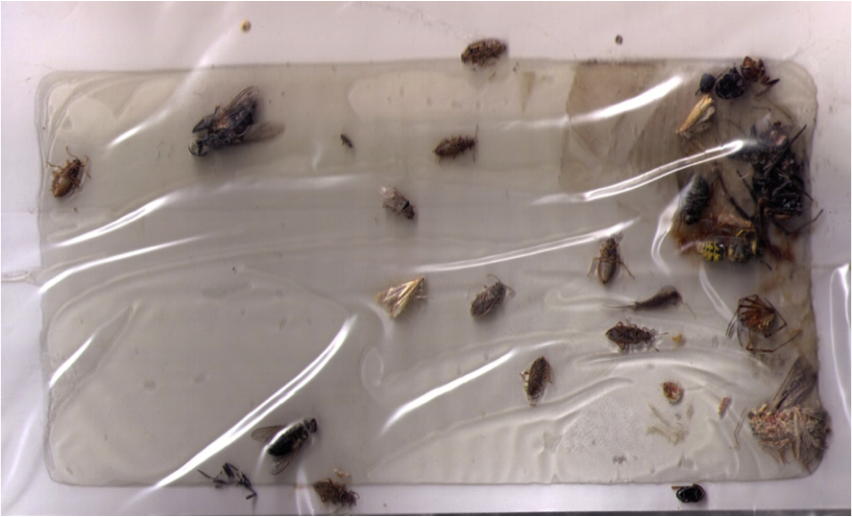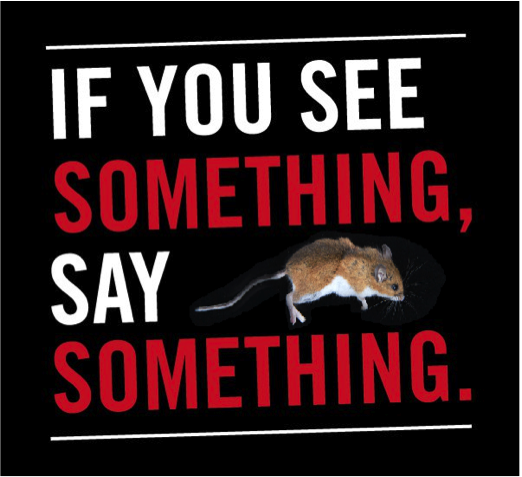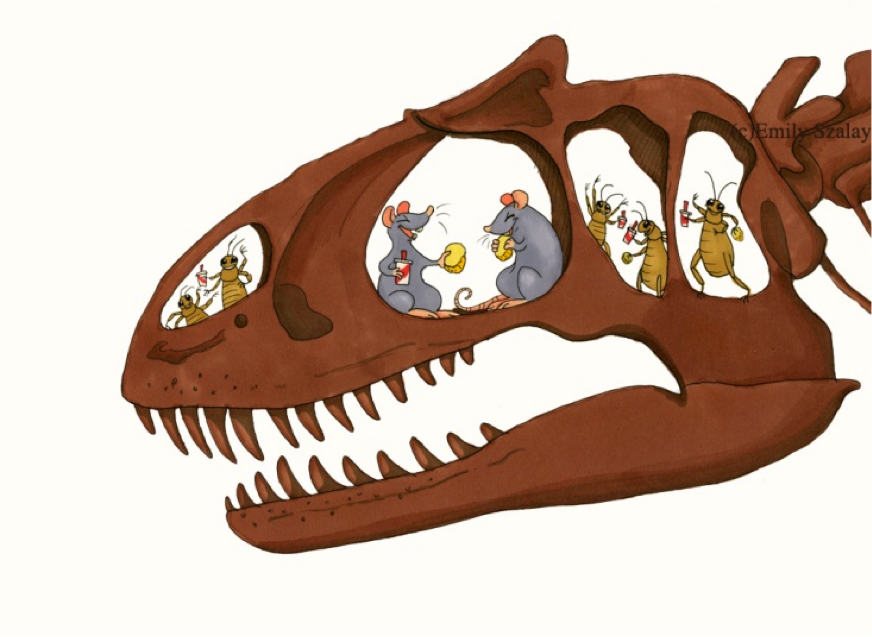By Catie Webb
Everything has an acronym these days; it seems that we feel we’re running so short on time, we cannot find a few additional seconds say whole phrases, or even truly consider what our shorthand means. In my experience, speaking acronyms aloud tends to point in the direction of a stale topic of conversation, and regularly downplays the importance what those few short letters actually stand for. We’re all culprits of acronym use, we’ve been taught that acronyms help us to remember long words and expressions, and while our abbreviations might remind us what individual words are, we sometimes bypass the opportunity to explore the concepts behind this string of letters. Included within acronym over-use is an increasingly wide-spread movement that many of us likely feel we are far too familiar with: Integrated Pest Management, or IPM. Ask yourself: each time you say “IPM” do you actually reflect on what it stands for? Better yet, do your colleagues and co-workers realize what a vital practice this is and why, or do they simply know that this acronym has something to do with bugs? Do they even know about IPM at all?
IPM plays a vital role in museums and other cultural institutions by employing relatively simple and easy techniques that focus on prevention of infestation to avoid damage to our incredibly special and irreplaceable collections and ultimately steer clear of pesticide use. In short, our collections stay safe and we as fragile human bodies evade pesticide exposure. So, a win-win, right? However, unlike pesticide programs where you can simply spray a chemical a few times a year, IPM requires a conscientious attitude, continuous practice and total staff and visitor buy-in to effectively reduce these risks. How do we achieve this? How do we make people want to practice this ALL THE TIME…when it sounds so boring and appears to take up the extra time that we don’t even have to say the whole phrase? We are hoping to answer some of these questions during a 2014 Annual Meeting session.
Original artwork by NHMU Exhibition Preparator, Emily Szalay.
I: Integrated
I know that plenty of you have cringed at (or perhaps worse) a seasoned professional at your institution eating chips near collections, or propping a door to the exterior, or carrying a stack of dusty books that just came from a garage sale through the hallway just outside collections storage; maybe you’ve been this culprit. Sometimes this is even a colleague who has collaborated with countless other museums, who you are certain understands best practice, who should know better; who you are positive knows about IPM. Oftentimes when you remind this colleague of IPM standards, they stare at you with a blank face or respond, “What’s that?” Or my all-time favorite response: they assure you that all previous museums they worked at never had an IPM policy. (Insert eye-roll here.) When you encounter situations like this, it’s important to maintain your cool, and remember what IPM stands for, and that IPM and your colleague share two common goals: providing a future for his or her job (after all, what is a museum without its collections or exhibits?) and avoiding health complications and death due to pesticide exposure. In situations like this, it’s helpful to remember that the first word of IPM is “Integrated,” meaning coordinated, interrelated, harmonious interaction. So being kind and keeping calm when you see someone violate your policy is very important to the integrity of IPM; no one is going to want to take an extra step in prevention in what they consider to be your policy if they don’t like, or at least respect, you. Working together, as a team, is essential to creating pest prevention-mindfulness.
P: Pest
Creating emotional buy-in is a difficult, yet essential part of an IPM program. You have to make people care. Figure out what your co-workers’ favorite parts of your institution are, and why they like working there…chances are, the answers you’ll hear will have something to do with your collections, whether it’s a painting, a dinosaur bone or an ancient manuscript, there’s bound to be something on display or in collections that your colleagues would be sad to see destroyed. Remember, our collections speak to and reveal universal human truths, use the emotional power that connects us to our collections to create shared reasons for protecting them. Remind your colleagues that as museum professionals, we’re tasked with keeping our unique collections objects safe and secure in perpetuity…forever. While this charge seems daunting, it’s made easier through protective measures, like IPM. Frequently mentioning these simple reminders in e-mails or meetings continuously encourages the mindset we’re trying to create. However, some of us may still have that colleague who doesn’t know why they work at a museum, at which point, it’s a good idea to review the second letter of IPM, P for “Pest.” At my institution (the Natural History Museum of Utah), we’re in a very unique location, pretty much a wilderness area, which presents some specialized pest issues; we encounter pests such as wild mice, scorpions, black widow and wolf spiders, and the ever occasional rattlesnake. Not only do we have to be on the lookout for traditional museum pests, like silverfish, booklice and clothes moths, we have to worry about our personal safety; revealing these particular pests (for example: a staff-wide e-mail with a picture reminder of recent black widow, scorpion or mouse caught in a trap) helps communicate the importance of one of our IPM rules: maintaining the seal of our building through not propping doors. If the door isn’t open, the pest can’t come inside. Reframing violations of policy into opportunities for learning is effective, if you can get emotional buy-in (with some slight gross-out tactics) from some of your least enthused staff, perhaps you’ve created ambassadors for your IPM program.

Gross-out tactics can create emotional buy-in for maintaining a well-sealed building.
M: Management
The most difficult part of IPM seems to be enforcement. Many times those of us who write the rules don’t have the authority to do much when we witness disobedience. Here’s where the M comes in, “Management.” Very few people enjoy being managed, but a plus side here, is that we’re all Managers in IPM. Everyone who practices IPM is a Manager of the pest problem. But how do you get everyone to feel empowered and act as a Manager? Involve your department throughout your museum; fostering friendships and diplomacy between departments helps create Managers. At my institution, our Collections and Research division provides private, behind-the-scenes tours a few times a year for our frontline staff; the infectious enthusiasm and advocacy of our collections staff enables our frontline to see why our collections are so amazing and important, and thus understand what they are protecting as Integrated Pest Managers. Some of the most diligent reporters of pest-sightings in my building have come from these groups: multiple pest entry sites have been reported and mitigated as a result of these Pest Managers, whom I am very grateful to.

An email reminder sent out to Natural History Museum of Utah staff.
There are countless ways to promote to your IPM program, cultivating a thorough understanding of the shorthand is simply one. However, taking the time to explain the how and why to our colleagues will help foster a perpetual mindset for pest prevention. Ask yourself, what is this little acronym really trying to accomplish?
Join us in for a discussion on IPM at the 2014 Annual Meeting on Monday, October 6, and learn how to develop, implement, and manage an integrated pest management plan (IPM) that protects not only your collection, but also visitors and staff as well.
Catie Webb is the Associate Registrar for Loans & Exhibitions at the Natural History Museum of Utah. She received her Bachelor’s of Science in Anthropology from the University of Utah in 2008 and has worked in Collections Registration for 4 years at the NHMU, aiding in the supervision of moving collections when the Museum relocated to the Rio Tinto Center in 2011. She is a facilitator in the on-going process of developing and maintaining an Integrated Pest Management program for the NHMU.









Add new comment